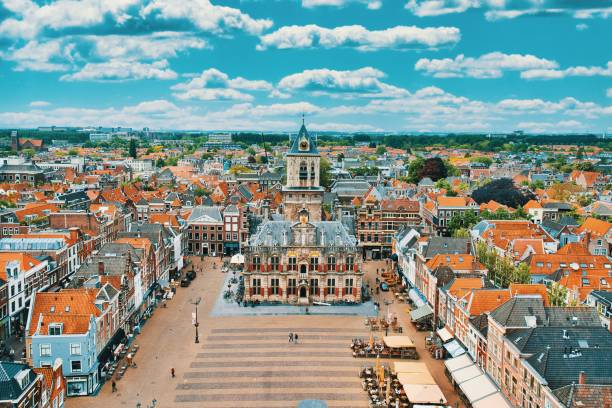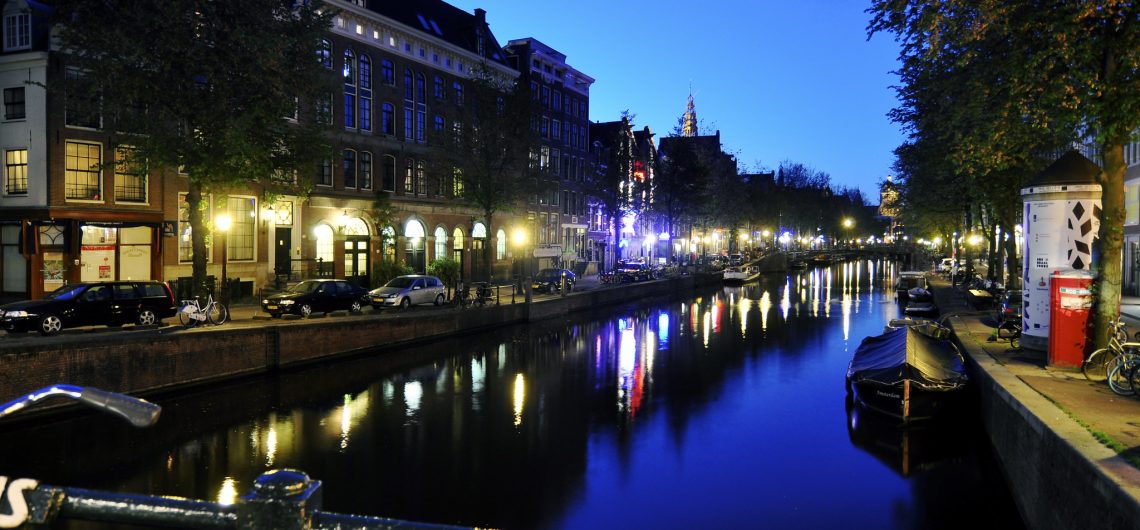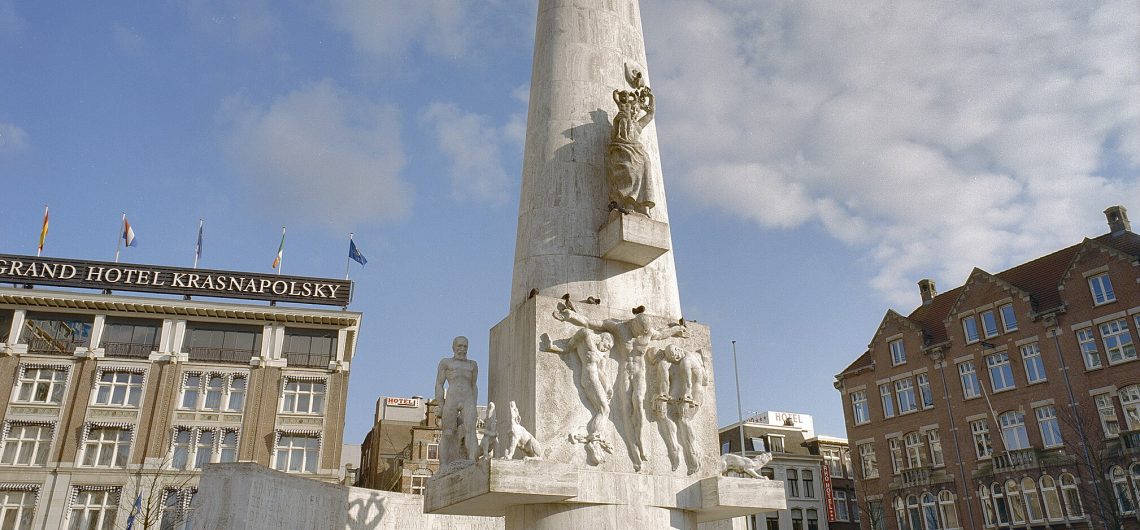Exploring the countryside in the Netherlands is a unique and exciting experience that offers visitors a glimpse into the country's rich history, culture, and natural beauty. From rolling fields of tulips to windmills and charming villages, the Dutch countryside has something to offer every type of traveler. In this 4000-word blog article, we'll explore some of the top destinations and activities for exploring the Dutch countryside, from cycling and hiking to cooking and traditional crafts. Visit Keukenhof Gardens. Located in the town of Lisse, Keukenhof Gardens is one of the most famous flower gardens in the world. With over 7 million bulbs planted each year, the gardens are a vibrant explosion of colour and fragrance, featuring tulips, daffodils, hyacinths, and many other spring flowers. The best time to visit is from mid-March to mid-May when the flowers are in full bloom. In addition to touring gardens, Keukenhof offers a variety of activities and events, including guided tours, flower shows, and live music performances. There are also several restaurants and cafes on site where visitors can enjoy a bite to eat and take in the beautiful surroundings. Cycle through the Dutch countryside. Cycling is a popular activity in the Netherlands, and for good reason. The country is crisscrossed with a network of bike paths that wind through picturesque villages, scenic landscapes, and historical sites. Whether you're a seasoned cyclist or a beginner, there are plenty of routes to choose from, ranging from easy family-friendly rides to more challenging mountain bike trails. One popular cycling route is the Vecht River Route, which follows the scenic Vecht River from Utrecht to Amsterdam. Along the way, cyclists can enjoy beautiful views of the river, historic castles, and charming villages. Another great option is the Waterland Route, which takes riders through the rural landscapes and
Exploring the countryside in the Netherlands is a unique and exciting experience that offers visitors a glimpse into the country’s rich history, culture, and natural beauty. From rolling fields of tulips to windmills and charming villages, the Dutch countryside has something to offer every type of traveler.
In this 4000-word blog article, we’ll explore some of the top destinations and activities for exploring the Dutch countryside, from cycling and hiking to cooking and traditional crafts.
Visit Keukenhof Gardens.
Located in the town of Lisse, Keukenhof Gardens is one of the most famous flower gardens in the world. With over 7 million bulbs planted each year, the gardens are a vibrant explosion of colour and fragrance, featuring tulips, daffodils, hyacinths, and many other spring flowers. The best time to visit is from mid-March to mid-May when the flowers are in full bloom.
In addition to touring gardens, Keukenhof offers a variety of activities and events, including guided tours, flower shows, and live music performances. There are also several restaurants and cafes on site where visitors can enjoy a bite to eat and take in the beautiful surroundings.
Cycle through the Dutch countryside.
Cycling is a popular activity in the Netherlands, and for good reason. The country is crisscrossed with a network of bike paths that wind through picturesque villages, scenic landscapes, and historical sites. Whether you’re a seasoned cyclist or a beginner, there are plenty of routes to choose from, ranging from easy family-friendly rides to more challenging mountain bike trails.
One popular cycling route is the Vecht River Route, which follows the scenic Vecht River from Utrecht to Amsterdam. Along the way, cyclists can enjoy beautiful views of the river, historic castles, and charming villages. Another great option is the Waterland Route, which takes riders through the rural landscapes and traditional Dutch villages of Waterland, just north of Amsterdam.
Visit traditional Dutch villages.
The Dutch countryside is dotted with charming villages and towns that offer visitors a glimpse into the country’s rich history and culture. From the picturesque fishing village of Volendam to the historic town of Haarlem, there are countless destinations to explore.
One of the most popular places to visit is Zaanse Schans, a picturesque open-air museum that showcases traditional Dutch windmills, houses, and crafts. Visitors can watch craftsmen at work, sample local cheeses and other traditional foods, and take a boat ride along the scenic Zaan River.
Taste local cheeses and other traditional foods.
The Netherlands is famous for its cheeses, and there are plenty of opportunities to sample them in the countryside. From creamy Gouda to tangy Edam, there are countless varieties to try, each with its own unique flavor and texture.
One great destination for cheese lovers is the town of Alkmaar, which hosts a weekly cheese market during the summer months. Visitors can watch as traders haggle over giant wheels of cheese, sample local varieties, and learn about the history and traditions of Dutch cheese-making.
In addition to cheese, there are plenty of other traditional Dutch foods, including stroopwafels (thin waffles filled with syrup), bitterballen (deep-fried meatballs), and herring (raw fish served with onions and pickles).
Take a boat ride through the canals.
The Netherlands is famous for its canals, which wind through the countryside and cities alike. Taking a boat ride through the canals is a great way to explore the countryside and take in the scenery from a different perspective.
One popular option is the canal cruise from Amsterdam to Volendam, which takes visitors along the scenic Ijsselmeer Lake and through
Please finish
the picturesque villages and landscapes of Waterland. Along the way, visitors can enjoy views of historic windmills, traditional Dutch houses, and grazing cows and sheep. There are also several stops along the way, including the charming village of Marken, where visitors can explore the historic neighborhood and traditional houses.
Explore the Dutch dunes and beaches.
The Dutch coastline is lined with beautiful dunes and beaches, offering visitors a chance to relax and enjoy the natural beauty of the country. From the bustling resort town of Scheveningen to the serene nature reserves of the Wadden Islands, there are countless destinations to explore.
One popular activity is hiking through the dunes, which are home to a variety of wildlife, including rabbits, foxes, and deer. Visitors can also take part in birdwatching, with several species of birds making their home in the dunes and surrounding wetlands.
For those looking for a more active experience, there are plenty of water sports to try, including windsurfing, kiteboarding, and kayaking. And of course, there’s always the option to simply relax on the beach and soak up the sun.
Visit Hoge Veluwe National Park.
Located in the eastern part of the country, Hoge Veluwe National Park is one of the largest and most diverse natural areas in the Netherlands. The park covers over 55 square kilometers and features a variety of landscapes, including forests, heathlands, and sand dunes.
Visitors can explore the park on foot, by bike, or on horseback, with several other rails and routes to choose from. There are also several museums and art galleries on site, including the famous Kröller-Müller Museum, which houses a large collection of modern art.
Visit the Keukenhof Gardens.
The Keukenhof Gardens, located near the town of Lisse, are world-renowned for their stunning displays of tulips and other flowers. The gardens are open from mid-March to mid-May and attract visitors from all over the world.
Visitors can wander through over 32 hectares of gardens, featuring over 7 million tulips, daffodils, hyacinths, and other colorful blooms. There are also several themed gardens, including a Japanese garden and a historical garden.
Take a boat tour through the canals.
One of the best ways to see the Netherlands from a different perspective is by taking a boat tour through the canals. Whether you’re in Amsterdam, Utrecht, or another city, there are plenty of options to choose from.
A boat tour allows visitors to see the city from a unique perspective, with views of historic buildings, quaint bridges, and charming houseboats. Some tours also offer food and drink options, making it a great way to relax and enjoy the scenery.
Explore the Frisian Islands
Located off the northern coast of the Netherlands, the Frisian Islands are a unique and beautiful destination to explore. With miles of sandy beaches, dunes, and nature reserves, the islands offer a chance to escape the hustle and bustle of city life.
Visitors can take a ferry to one of the islands, such as Texel or Terschelling, and spend the day cycling, hiking, or relaxing on the beach. There are also several charming villages to explore, with traditional houses and local shops.
Visit the Zaanse Schans
The Zaanse Schans is a historic neighborhood located near the city of Zaandam, featuring traditional Dutch houses, windmills, and other historic buildings. Visitors can stroll through the neighborhood, stopping to take photos and learn about the history of the area.
There are several museums on site, including the Zaans Museum, which tells the story of the Zaan region and its industries. Visitors can also watch traditional craftsmen at work, such as clog makers and cheese makers.
Cycle through the Betuwe region.
The Betuwe region, located in the central part of the Netherlands, is known for its fruit orchards, quaint villages, and scenic countryside. Cycling through the region is a popular activity, with several cycling routes to choose from.
Visitors can stop at local fruit stands to try fresh strawberries, cherries, and other seasonal fruits. There are also several historic castles and manor houses to explore, such as the castle of Wijchen and the state of Mariënwaerdt.
Explore Giethoorn
Giethoorn is a picturesque village in the province of Overijssel, known for its canals, bridges, and thatched-roof houses. Visitors can take a boat tour through the canals, rent a paddleboat or canoe, or stroll through the village on foot.
There are several museums in Giethoorn, including the Museum Giethoorn ‘t Olde Maat Uus, which tells the story of life in the village over the centuries. Visitors can also stop at local shops to buy souvenirs, such as handmade wooden shoes or traditional Dutch cheese.
Visit Kinderdijk
Kinderdijk is a UNESCO World Heritage Site, located in the province of South Holland, and is home to a network of 19 windmills dating back to the 18th century. Visitors can explore the area on foot or by bike, with several cycling routes to choose from.
There are several museums and visitor centers on-site, including the Wasboompumping Station, which tells the story of how the Dutch have managed water over the centuries. Visitors can also take a boat tour through the area, offering a unique perspective on the windmills and surrounding countryside.
Visit the Delta Works
The Delta Works is a series of engineering marvels designed to protect the Netherlands from flooding caused by the North Sea. Visitors can learn about the history of the project and see its expressive structures up close.
There are several visitor centers located throughout the Delta Works, including the Delta Experience at Neeltje Jans and the Watersnood Museum in Zeeland. Visitors can take guided tours, watch films, and explore interactive exhibits, making it an educational and fascinating experience.
Overall, exploring the countryside in the Netherlands is a unique and rewarding experience that offers visitors a chance to connect with the country’s rich history, culture, and natural beauty. Whether you’re cycling through picturesque villages, tasting local cheeses, or hiking through the dunes, there’s something for everyone to enjoy.








